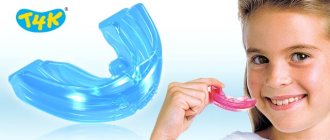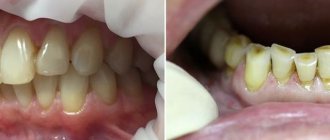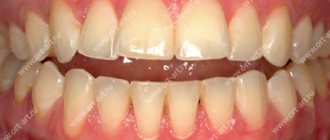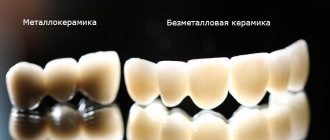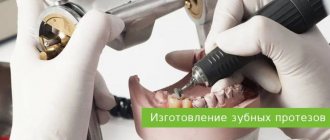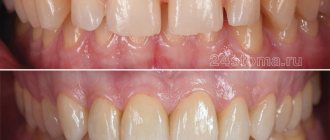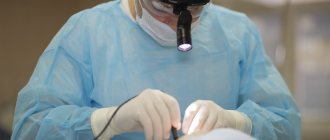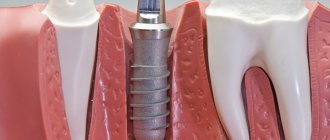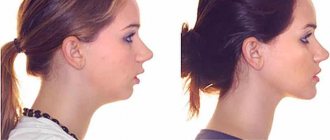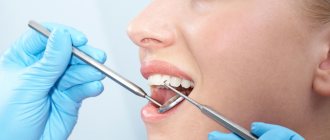The position of the teeth with the jaws closed is called a bite in dentistry. Unfortunately, not every one of us can boast of perfectly straight teeth. Most people experience malocclusion. Most often, they are small and few people notice them, but there are situations when the malocclusion is pronounced and causes a lot of inconvenience. In these cases, it is customary to install braces. What to do if for some reason it is impossible to install braces? Dentistry has developed methods for correcting malocclusion using prosthetics, but doctors warn that they can only be used in specific clinical cases, strictly according to indications.
Types of bite
All babies are born with a malocclusion. Their lower jaw is moved back. Thanks to active sucking, it gradually moves forward. When bottle-feeding, you need to take this point into account and not give children a nipple with a large hole so that they train their muscles, ensuring their load.
By age 14
A permanent (adult) bite is formed, all milk teeth are replaced by permanent ones, the number of teeth reaches the physiological norm (28-32).
By this time, it becomes clear what type of bite has formed:
- Normal
It is also called physiological. A normal bite has variations: the lower teeth slightly overlap the upper teeth, the teeth meet rather than overlap, and some may be tilted forward. The main definition is that all teeth are closed, there is contact between them, the lateral teeth are closed without gaps.
- Deep
The upper teeth cover the lower ones by more than a third. Contact is broken. This pathology is called traumatic because it leads to injuries to the mucous membrane, abrasion of teeth, and disruption of the temporomandibular joint.
- Open
A gap remains between the teeth, resulting in food not being chewed completely. The defect affects the process of swallowing and even breathing. The mucous membranes dry out, saliva does not wash away plaque in time, hence frequent caries and other diseases of the oral cavity.
- Distal
The gap is formed as a result of the fact that the upper jaw is strongly pushed forward. Accompanied by dysfunctions of breathing, swallowing, and chewing. Pain in the joints often occurs.
- Mesial
With this defect, the lower jaw moves forward. With this pathology, two extremes can be observed: crowding of teeth or gaps between teeth (trema and diastema). When there is crowding, tartar accumulates very quickly and if it is not cleaned off in time, periodontal diseases (gingivitis, periodontitis) occur.
- Cross
The teeth overlap each other. Such a defect is difficult to treat and forces one to resort to surgical methods. Leads to facial deformation, disruption of the TMJ, and permanent injuries to the mucous membrane.
Physiological rest
Physiological rest means the natural position of the jaws, held relative to each other without the use of muscle effort, only due to the anti-gravity reflex. The relaxed state is characterized by the absence of occlusal contact, and the distance between the dental rows should not exceed 2-5 mm. Based on bite height indicators, in dentistry there are two categories of pathologies:
- An overbite is usually a consequence of mistakes made during the creation of the prosthesis, leading to constant contact between the teeth. Accompanied by a feeling of discomfort and prolonged muscle tension, increasing the likelihood of injury;
- Low bite is the result of intensive abrasion of tooth enamel, or incorrect fitting of the replacement structure, as a result of which salivation increases, facial features change, and angular cheilitis develops.
Restoring the height of the bite requires careful measurement of indicators, for which various techniques are used.
Measurement methods
Methods used in modern dentistry include:
- The anatomical method is a subjective approach based on a visual assessment of the structure of the facial contour;
- Anatomical and physiological method is to determine the height at rest, which makes it possible to identify possible overestimation or underestimation of the bite.
In this case, the dentist evaluates the condition of the tissues around the mouth. When the physiological occlusion is restored, the facial contour is restored, the corners of the mouth rise, and the nasolabial folds become less pronounced.
Planning for prosthetics
The list of preparatory measures is determined by the specifics of the identified anomaly. For a reduced bite, it is recommended to use special mouthguards or orthodontic devices that restore the natural structure in a conservative way, while the duration of treatment depends on the anatomical features of the structure of the jaw. In difficult cases, surgical intervention is recommended, during which the relief and shape of the gum tissue are formed artificially.
Prosthetics for deep bite
The task of the orthopedist in this case is to eliminate damage to the mucous membranes, recreate occlusion (touching of teeth when closing), evenly distribute the chewing load and restore the height of the lower part of the face.
To do this, the occlusal surfaces of the teeth are leveled by grinding away the hard tissues. If a large number of units are missing, partial removable dentures with occlusal overlays are used. If the teeth are intact, the bite is corrected with crowns.
Reasons for the development of the anomaly
There are many reasons that influence the height of a person’s bite. Dentists name the following factors that contribute to reducing the distance between the jaws in occlusion:
- pathological abrasion of the tooth surface , accompanied by loss of its density and subsequent destruction of incisors and molars;
- bruxism or teeth grinding , which entails enamel deformation, subsidence of teeth and a decrease in central occlusion;
- uneven chewing load in certain areas of the jaw row, which often occurs when restoring teeth using a prosthetic bridge;
- loss of molars on one or both jaws;
- destruction and extraction of several teeth in combination with displacement of the remaining elements of the row relative to the central jaw line;
- metabolic disorders in the body , which entails a deficiency of calcium and phosphorus, which affects the strength of bone tissue and contributes to its atrophy;
- improperly manufactured prosthetic structures.
In order for prosthetic structures to be manufactured correctly, it is necessary to carry out a considerable number of measurements, one of which is considered to be carrying out all studies in a state of physiological rest of the patient’s maxillofacial apparatus.
How dental impressions are taken for prosthetics and orthodontic treatment.
Read here about the purpose of teeth filing.
At this address https://orto-info.ru/ortodonticheskoe-lechenie/podgotovitelnyiy-period/separatsiya-zubov.html all the most important things about teeth separation when wearing braces.
Methods for correcting open bite
The teeth that prevent the jaw from closing are ground down. After a little grinding, the surface is polished and calcium and fluorine preparations are used for remineralization. When grinding off a significant thickness, the tooth is covered with a crown.
Teeth that lack height are augmented with crowns. In cases of insufficient height of the front teeth, veneers can be used. If all teeth are intact, then the main goal is to create occlusal contact. If a part is missing, then the task becomes more difficult. It is necessary to restore the dentition and occlusion at the same time. For this purpose, bridges and removable dentures (clasps) are used.
Initial consultation with an orthodontist
During the consultation, the following problems were identified: the absence of the 35th tooth (there is no place for its prosthetics), pathologically deep bite, bruxism, severely worn teeth in the lateral regions, minor chips on the front teeth, displacement of the jaw when opening the mouth, clicking in the TMJ on the left.
Bruxism, deep bite, increased tooth wear, TMJ dysfunction - all these problems, which are of the same nature, will only get worse without proper treatment. Treatment should be carried out comprehensively with the participation of several specialists: an orthodontist, an orthopedist, a neuromuscular dentist, an osteopath.
Prosthetics for crossbite
Intervention is possible only with the skeletal form of the anomaly, if the patient has refused other types of help. In a preserved dentition, crowns are installed on the lateral teeth. If there is a large overlap, the natural crown (the part of the tooth that is visible) is shortened, cutting off the excess. If there are missing teeth, bridges are used.
If the teeth are slightly tilted, preparation is limited. For large deviations, tabs are used, changing their axis relative to the axis of the root. Such dentures are used for malocclusion if the deviation does not exceed 15 degrees. A crown is placed on top of the stump with an inlay.
Consequences
If dental malocclusion is not corrected in a timely manner, irreversible consequences may occur, including:
- Dental pathologies.
- Diseases of the gastrointestinal tract.
- ENT pathologies.
- Speech disorders.
- Central nervous system disorders, headaches and joint pains, development of psychological problems.
- Violation of facial symmetry, aesthetic defects.
This is a short list of the dangers of malocclusion. Each item has a number of medical diagnoses of varying severity.
Therefore, if you suspect the formation of a pathological bite, you should consult an orthodontist as soon as possible, who will conduct a thorough diagnosis and give recommendations for further treatment.
Minor defects
If there are anomalies in the size and shape of the front teeth, the position can be corrected without the intervention of an orthodontist. Veneers and crowns change the shape, close diastemas (gaps between the front teeth), tremata (gaps between other teeth), and visually increase the size of the teeth. Increasing the height of the bite has a positive effect: the lower jaw that has moved back returns, this reduces the load on the temporomandibular joint. The pain and clicking go away. Facial proportions are restored and posture is straightened.
Basis of construction
The construction of the bite height is based on determining the distance between the two jaws in the position of maximum intercuspal closure of the teeth.
This indicator is of great importance in dental practice, since it allows one to determine the correct location of the elements of the dentofacial row.
A change in the physiological height of the bite as a result of the loss of some teeth or their displacement relative to the jaw line entails a change in the position of the main anatomical elements that surround the oral cavity.
In this situation, the patient is diagnosed with sunken lips, an increase in the depth of the nasolabial folds, a significant protrusion of the chin forward, and a decrease in the height of the lower sector of the face.
In addition to being aesthetically unattractive, this situation significantly complicates further orthodontic and orthopedic therapy.
Stage III - treatment and preparation of teeth for prosthetics
Before dental prosthetics, it is necessary to prepare the teeth so that they do not disturb the patient some time after the installation of expensive structures. To do this, Dial-Dent conducts a thorough diagnosis of the condition of previously treated canals and, if necessary, treats the canals of the teeth under a microscope, guaranteeing maximum service life of the teeth. To create a zone of attached gum, the surgeon performed periodontal manipulation. The hygienist performed gentle teeth cleaning and applied a special product to the front teeth to eliminate hypersensitivity. All these procedures were performed gradually, at a time convenient for the patient, while the dental implant was healing.
Stage II - tooth implantation
After removing the braces, implant surgeon V.P. Alaverdov installed an Astra Tech dental implant for the patient. The operation lasted 30 minutes and was performed under sedation (in medical sleep). Healing took several months.
The fixed orthotic remains on the teeth until the final dental prosthetics. The dimensions of the orthotic will be harmoniously distributed between the antagonist teeth. Crowns on the teeth will fix the correct position of the bite.
